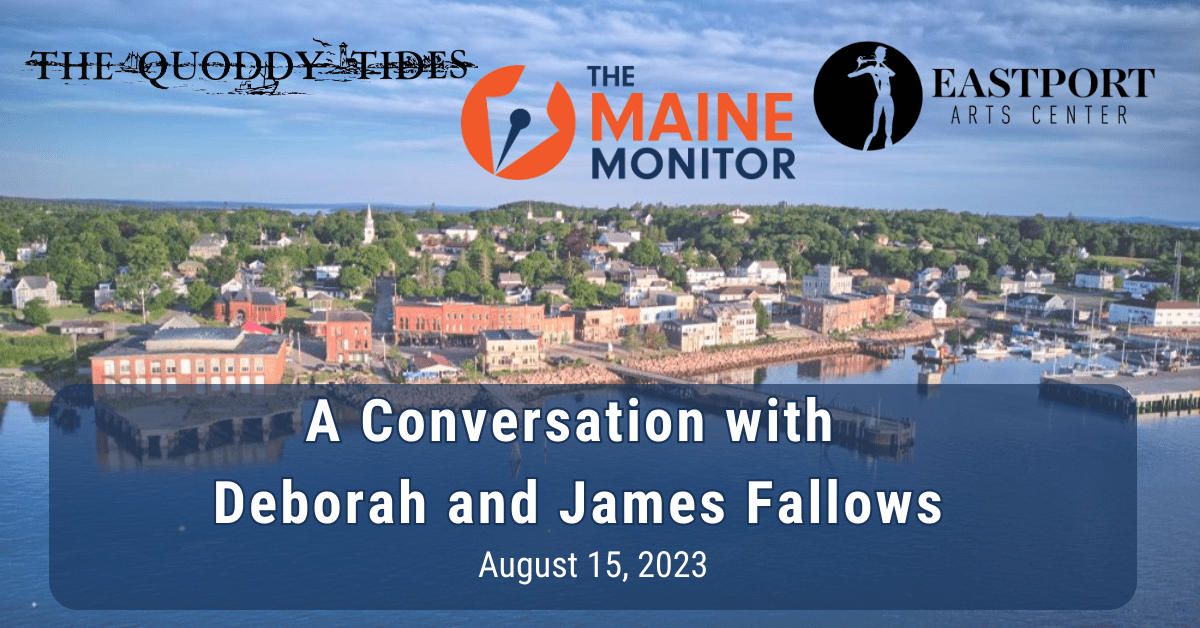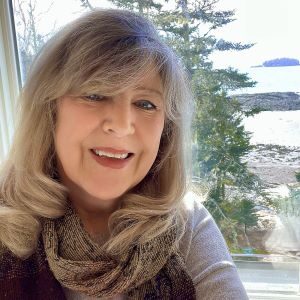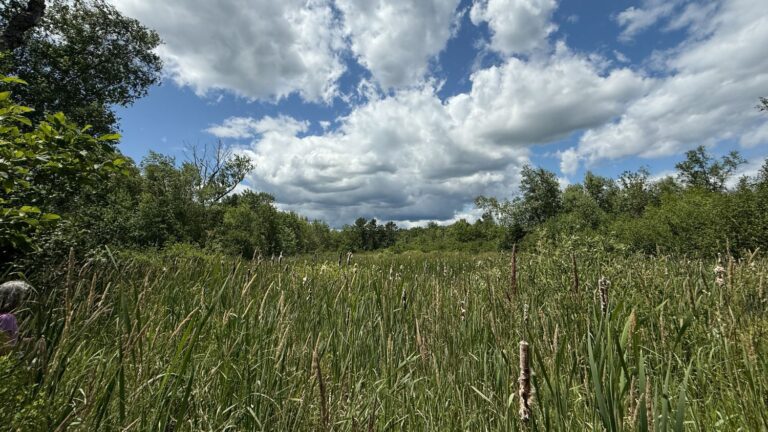In 2013, James and Deborah Fallows began an odyssey looping through the US in their single engine plane to uncover the big and small truths of small-town communities, including Eastport — a town that so enchanted the journalists they returned at least a half-dozen times while collecting interviews for their 2018 national bestselling book, “Our Towns: A 100,000-Mile Journey into the Heart of America.”
Tuesday night, the renowned journalists shared some of their discoveries, as well as some of their post-pandemic observations, during a return visit to Eastport. The event was held at the Eastport Arts Center, and was hosted by The Maine Monitor, the Eastport Arts Center, and The Quoddy Tides, with support from The Commons and The Boat School.
During an interview moderated by David Dahl, editor of the Maine Monitor, in front of more than one hundred people, the couple talked about what has and hasn’t changed over the last decade in small-town America.
Eastport was among the fifty communities included in “Our Towns’’ and an HBO film based on the book.
Beginning their journey a decade ago in Holland, Michigan and Sioux Falls, South Dakota, the Fallowses crisscrossed the country collecting interview material in cities and towns of varying size including Columbus, Ohio; Starkville, Mississippi; and Fresno, California.
Over the course of their careers, the couple has jointly and independently authored several books and numerous articles for publications such as The Atlantic, National Geographic, Slate, and The New York Times, among others. Deborah Fallows is a linguist and fellow at New America who has done extensive research across the globe collecting material for her articles and books, including “Dreaming in Chinese” and “A Mother’s Work.” James Fallows, her partner of more than 50 years, is an award-winning author and longtime writer for the Atlantic magazine.
Of all their work, the couple said that their research for Our Towns was perhaps the most illuminating. They struck upon the idea for the book after returning from extensive travel in China, wondering what America would look like to them if seen through fresh eyes and a more focused lens.
After getting past the “gee whiz factor,” the couple said they settled into an interview pattern, asking people questions about how they felt about their communities, rather than querying them about national issues. They said common threads began to emerge among all the communities in every part of the country, regardless of size, economic, religious, or political differences.
“People have a sense of agency in where they live, that ‘I can do something in this town that matters and will have consequences,’ ” Deborah Fallows said.
Whether it’s because of geography or just plain bad luck, James Fallows said examples can be found in every niche of the county, from hardscrabble places such as San Bernardino, California to Eastport, Maine. Citing a string of bad luck ranging from the collapse of an effort to ship pregnant cows overseas to struggles with the pier, he said Eastport is a perfect example of a community that’s had to reinvent itself — time and time again.
Turning to a broader, national observation, he said there has always been a long arc of people trying harder to make things better, even in times of civic tension.
“In any decade of American life, you can see the forces tearing the place apart, bringing out the cruelest and worst in people and also the forces working against that,” Fallows said.
Despite this, he said that no matter where they traveled or who they asked, most people believed that where they lived was doing pretty well, but the rest of the country was “going to hell.” James Fallows laid the blame for this paradox of perception at the feet of the media. By over-focusing on problems, he said the media has distorted the image of what’s happening around the country in an effort to keep audiences engaged.
The couple found that some common themes of success did emerge in the communities they visited. Top among them were, resiliency, adaptability, collaboration, a strong sense of identity. Once again spotlighting Eastport, they said they’ve watched the city evolve over the years to a more robust community of artists, for example.
Waxing on about time spent at the Peavey Library and at the brewery, the couple clearly embraced Eastport as a favorite among those they’ve visited. Deborah Fallows said they no longer consider themselves “from away.”
Still, she said they also keep in touch with a remarkable number of people in the other communities where they’ve spent considerable time. And they said there are plenty of examples where, by setting aside divisive issues, communities have collaborated to find solutions.
Some communities have adopted public-private partnership models, such as former mill town, Greenville, South Carolina where local, high-tech industry titans, including General Electric, BMW, and Michelin, banded together to help create a strong core of STEM and STEAM curricula in the schools.
Muncie, Indiana, faced two daunting crises — the public school system and the community’s newspaper were both faltering. That’s when Ball State University, a strong leader in the city, stepped up, taking over operation of the public school system and filling the news void with its daily school newspaper.
“In the last five years or so, that school newspaper has become the newspaper of the town, which is a really unusual but interesting model,” Deborah Fallows said.
The couple said a strong news presence was a common denominator among many communities that have been able to overcome challenges. One example they saw was in Columbus, Mississippi, where four generations have kept the newspaper going for 100 years, a story similar to that of the Quoddy Tides in Eastport.
The couple also applauded strong, emerging not-for-profit news outlets, including digital newsrooms such as The Maine Monitor, which they say help keep people informed with reliable news and connect people in meaningful ways.
One audience member asked how communities are dealing with the tough issues during the country’s increasingly divisive climate. One example: how do libraries cope with demands for certain books to be banned.
Deborah Fallows said she had posed that question to the librarians at the Peavey Library during her long discussion with them during this visit to Eastport. Although they told Fallows that no one has made such a request, the library has a process in place to handle it, should the situation arise. Fallows hinted that libraries might be a topic for one of her future projects.
“The library can have…the honest conversations, the sensitive conversations, whether it’s about race or ethnicity, or the price of mortgages, or the price of gas, in a more civilized manner,” she said. “Because everybody knows they’re supposed to behave well in the library and it’s a place of trust.’’
The couple said those civil conversations are crucial, particularly in our post-pandemic, politically divided climate. James Fallows pointed to the virtual gatherings and social media that have supplanted physical gatherings and groups where people once met to build relationships and community.
“There’s lots of indication that that has meant real fragmentation, isolation,” he said. “So, I think it’s a question again, of the forces of creation, destruction, and creation. That window on American Life was very important and remains very important — the question is whether people are doing other things together now.”
Building on their book and the HBO special, the couple established the Our Towns Civic Foundation, a nonprofit organization focused on community renewal through shared stories and by promoting connections among like-minded people around the country.







